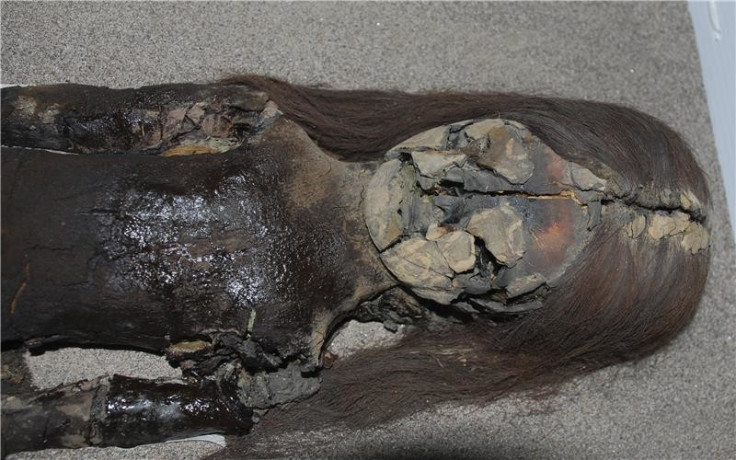World's oldest mummies turning to black ooze under impact of climate change

The world's oldest mummies, dating back to 5050 BC, are beginning to degrade and turn to black ooze due to climate change, says a study.
The decay was detected across a range of ancient relics including the walls of King Tutankhamen's tomb, Apollo space suits, Chinchorro mummies and historic manuscripts, prompting a study led by Harvard into the cause.
It was first noticed among the 120 Chinchorro mummies housed in the University of Tarapacá's archaeological museum in Arica, Chile.
"In the last 10 years, the process has accelerated," said Marcela Sepulveda, a professor of archaeology in the anthropology department and the Archeometric Analysis and Research Laboratories at the University of Tarapacá, during a recent visit to Cambridge.
Initial studies of the samples from the museum showed that the degradation was microbial.
"The key word that we use a lot in microbiology is opportunism," says Ralph Mitchell, Gordon McKay Professor of Applied Biology Emeritus at Harvard School of Engineering and Applied Sciences (SEAS) who was called in to solve the puzzle.
Mitchell says: "With many diseases we encounter, the microbe is in our body to begin with, but when the environment changes it becomes an opportunist."
Humidity the culprit
It turned out that elevated moisture in the air was damaging the skin of the mummies.
This finding was consistent with what Sepulveda had reported of rising humidity levels in Arica.
The researchers conclude that the ideal humidity range for mummies kept in the museum was between 40% and 60%. Higher levels could lead to degradation and lower levels to acidification.
While the mummies in the museum could be saved, the challenge is about those outside.
There are believed to be hundreds of the 7,000-year-old Chinchorro mummies buried just beneath the sandy surface in the valleys throughout the region.
"How do you preserve them outside the museum? Is there a scientific answer to protect these important historic objects from the devastating effects of climate change?" asks Mitchell.
The solution to the "forensic problem" he thinks must come from the latest science.
Preparing mummies Chinchorro way
The hunter-gatherer Chinchorro would first extract the brains and organs, then reconstruct the body with fibre, fill the skull cavity with straw or ash, and use reeds to sew it back together, connecting jaw to cranium. A stick kept the spine straight and tethered to the skull. The embalmer restored the skin in place — sometimes patching the corpse together using the skin of sea lions or other animals.
Finally, the mummy was covered with a paste, made from manganese in the older times to ochre and brown mud in later eras.
© Copyright IBTimes 2025. All rights reserved.





















